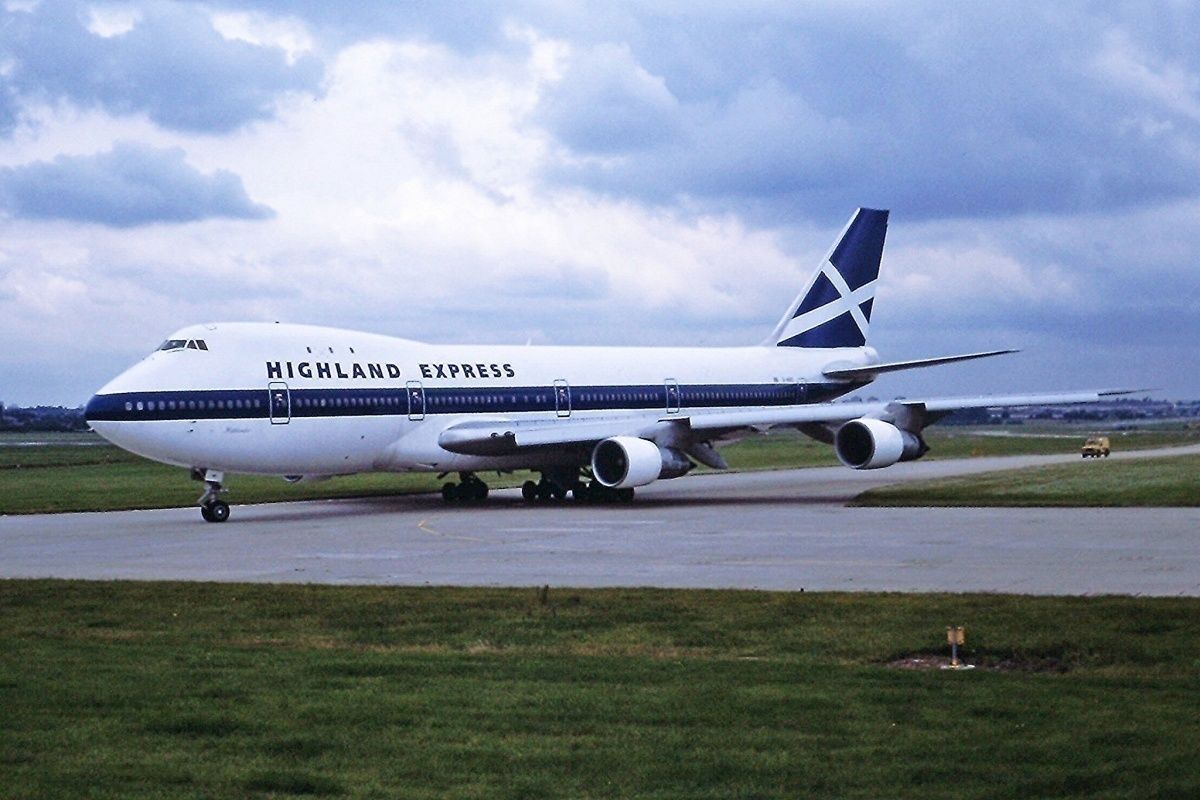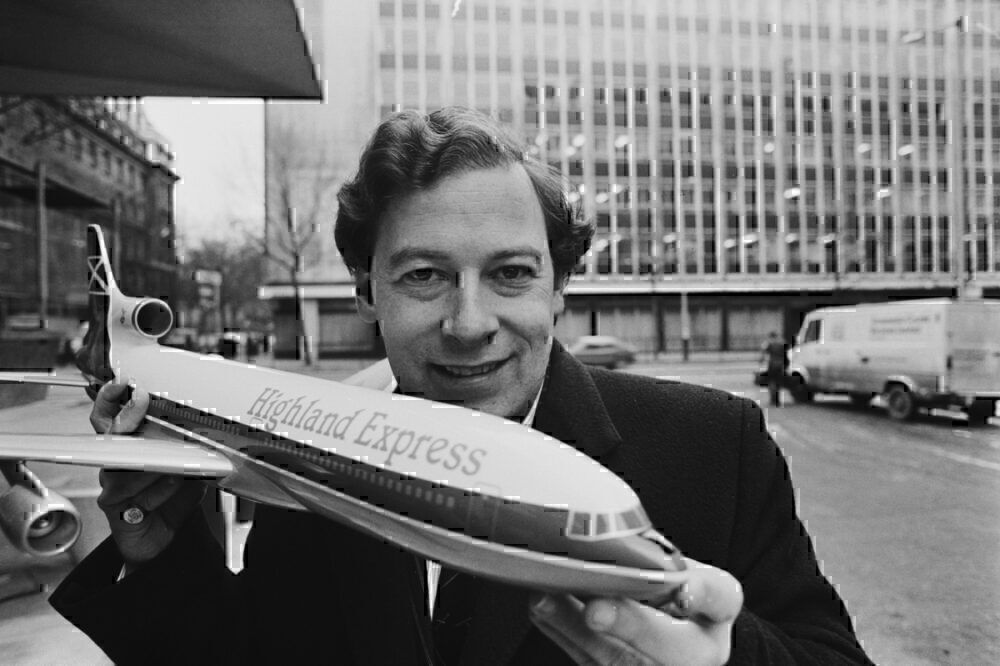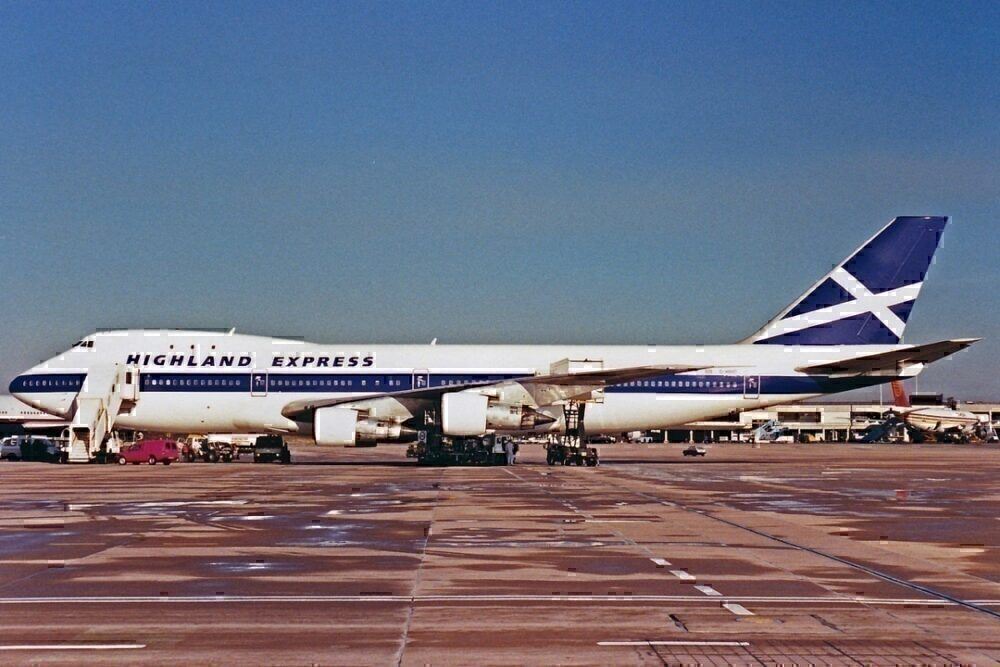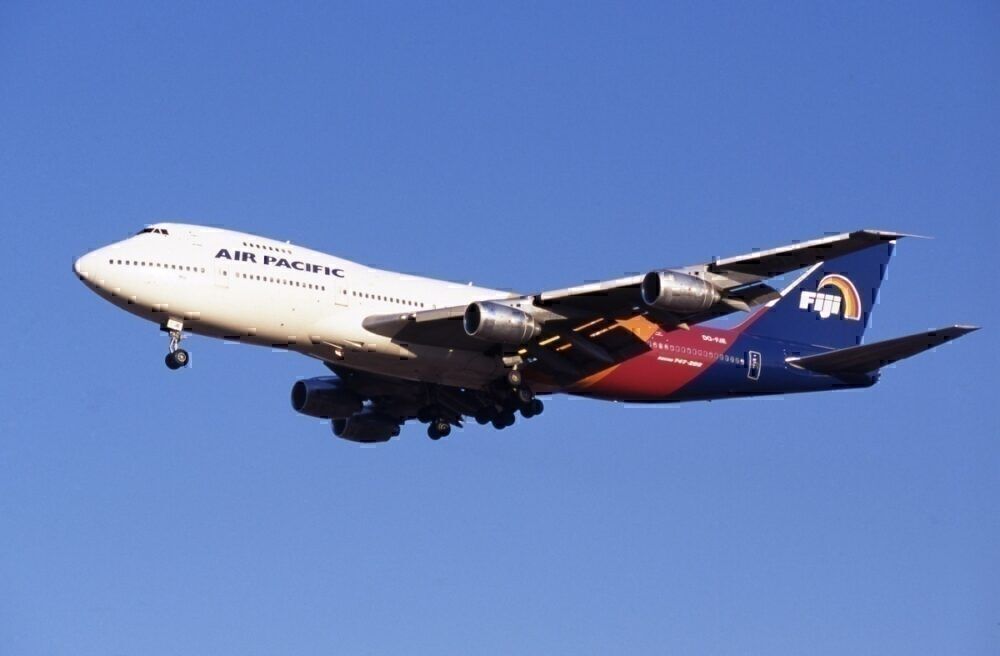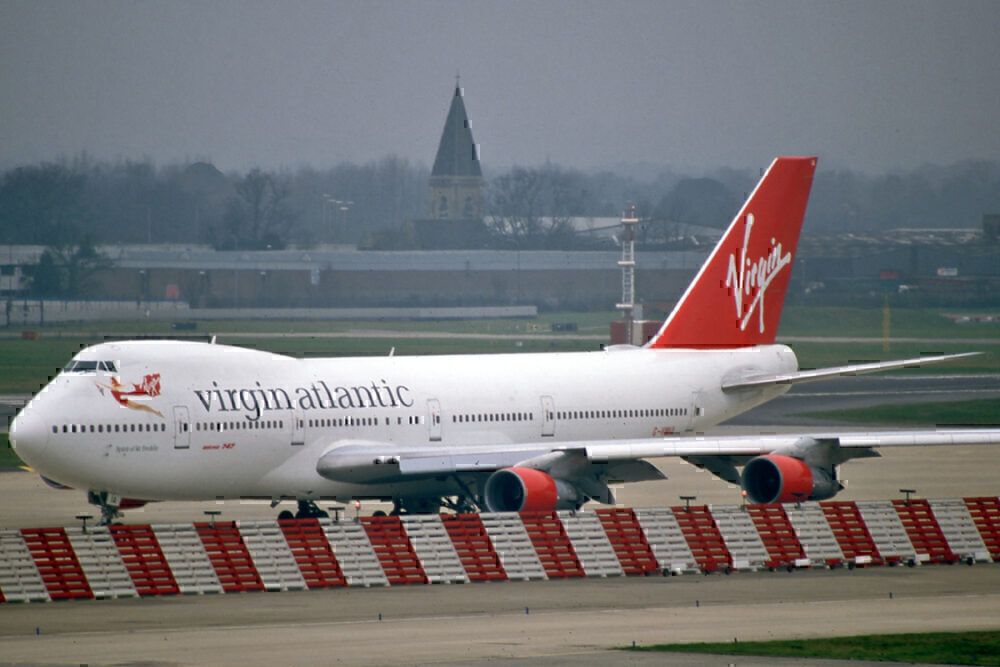Back in the late 1980s, there was a short-lived Scottish airline by the name of Highland Express Airways. The airline, having operated for only four months, utilized a single Boeing 747-100 to transport passengers between UK cities and New York. So why did the airline collapse? Let's find out.
The original plan
Highland Express was founded by Randolph Fields, who was a 31-year-old lawyer, according to Yesterday's Airlines. Around 1984, Fields approached Richard Branson and was able to get him on board as a business partner and investor for his "paper airline," British Atlantic Airways, which would become Virgin Atlantic.
However, the two had different visions of what the airline was to be. Fields saw the airline becoming an all-business-class operation while Branson was keen on making it a low-cost carrier. By September 1984, Branson had lost confidence in his business partner and the pair split, leaving Fields with £125,000 in compensation and £1 million worth of shares, which were bought out in 1985. Another perk, according to sources, was that he also received unlimited free travel on Virgin.
An airline with a Scottish identity
With a reasonable sum of money now at his disposal, Fields went on to create Highland Express himself. This airline was to operate transatlantic services from Prestwick, Birmingham, and London Stansted to Newark - all with a "Scottish flavor."
The airline's callsign was TARTAN, even though all of its services would start in England. Flights from Birmingham and Stansted would then stop in the Scottish long-haul hub of Prestwick on their way to Newark.
Highland Express Airways was to officially launch on the same day as the Scottish International Airshow at Prestwick: Saturday, May 30th, 1987. The flight would go from Prestwick to Newark, then from Newark to Toronto. However, the service was delayed because the license to operate to Toronto was not acquired in time. Additionally, the deal to lease a 747 collapsed, and the replacement aircraft was delivered weeks late.
Operations finally began on June 30th as flight VY201, starting in Stansted, stopping in Prestwick, and continuing to Newark. Birmingham services followed on July 4th as flight VY211. The aircraft used was a 747-100 with registration G-HIHO - also nicknamed "Highlander."
With only one aircraft in its fleet, there could only ever be a single daily Transatlantic flight. Thus, over a week, there would be three flights originating in Stansted and three starting in Birmingham. This would shift slightly as, once a week, the aircraft would fly to Brussels to undergo maintenance at Sabena facilities (Belgium's national airline until 2001).
Five months of flights
Flying from July through November, the airline didn't see much success during its time in operation as debts quickly began to accumulate. Due to its routing through Prestwick, the domestic services between England and Scotland were often half full. Apparently, this portion of the flight could go for as low as £10-19 each - equivalent to roughly £28-46 in 2020.
From time to time, the airline would charter a BAC One-Eleven (or BAC 1-11) to handle the domestic leg of the journey between Prestwick and Birmingham or London Stansted. The reason for this was likely the maintenance that was required for the 747.
A Gatwick-Prestwick-Newark route would launch in November of 1987 but shut down after three weeks, along with the rest of the airline as its only aircraft had been repossessed while in Brussels at Sabena.
The end of Highland Express Airways
In the end, the airline was unable to pay its bills and thus collapsed with debts of £8.4 million (£20.16 million in 2020). Fields claimed to have a substantial 70% load factor with a good number of Christmas bookings, but this was not enough. Another factor in the airline's failure, according to Fields, was the global stock market crash on October 19th, 1987 - also known as "Black Monday."
Subsequent plans to resurrect the airline a few months later with a new managing director and charter flights were not successful.
As for the aircraft, G-HIHO, it went on to fly with Qantas and Air Pacific initially. Yesterday's Airlines reports that the plane was leased to Aer Lingus but sub-leased back to Qantas for a time as well. The jumbo jet returned to the United Kingdom in 1990, joining Virgin Atlantic as G-VMIA 'Miami Maiden', becoming 'Spirit of Sir Freddie' in 1993 when the airline bought out the aircraft. The aircraft flew with Virgin from then on, until its retirement in 2000.
All in all, the aircraft had flown 84,293 hours and gone through 18,397 cycles at the time of its scrapping in March of 2000.
Conclusion
Looking back at the life and death of Highland Express Airways, many questioned the concept, and if it was doomed from the beginning. The airlines certainly had the odds stacked against it with limited initial funding and only one aircraft serving all its passengers.
Operating with a single aircraft puts immense pressure on the maintenance team. It fails to take into account the fact that unexpected circumstances will arise in the day-to-day operations of an airline. One small issue could lead to a delay or grounding, sparking a plague of customer service issues for the airline's small team.
Do you think anything could have changed with Highland Express Airways' business model or operations for it to succeed? Or do you think it was doomed from the start due to a lack of funds? Let us know in the comments!

